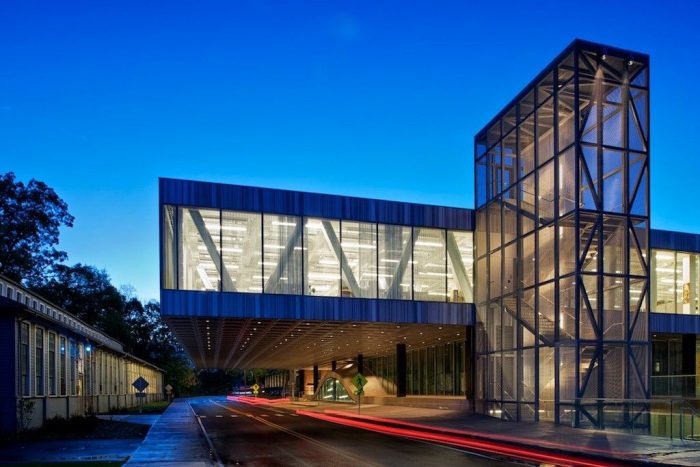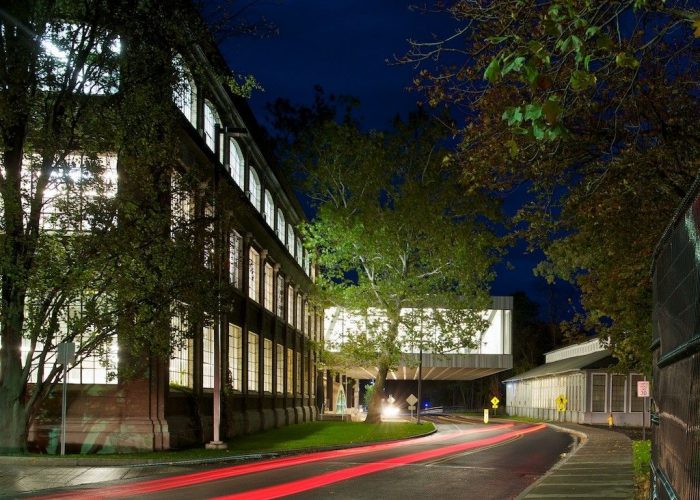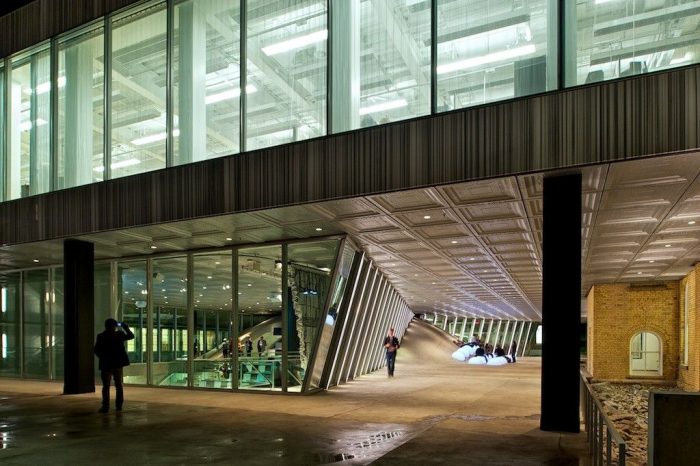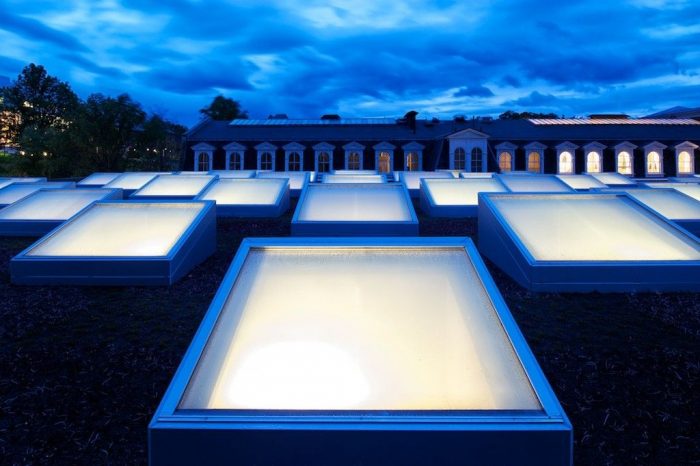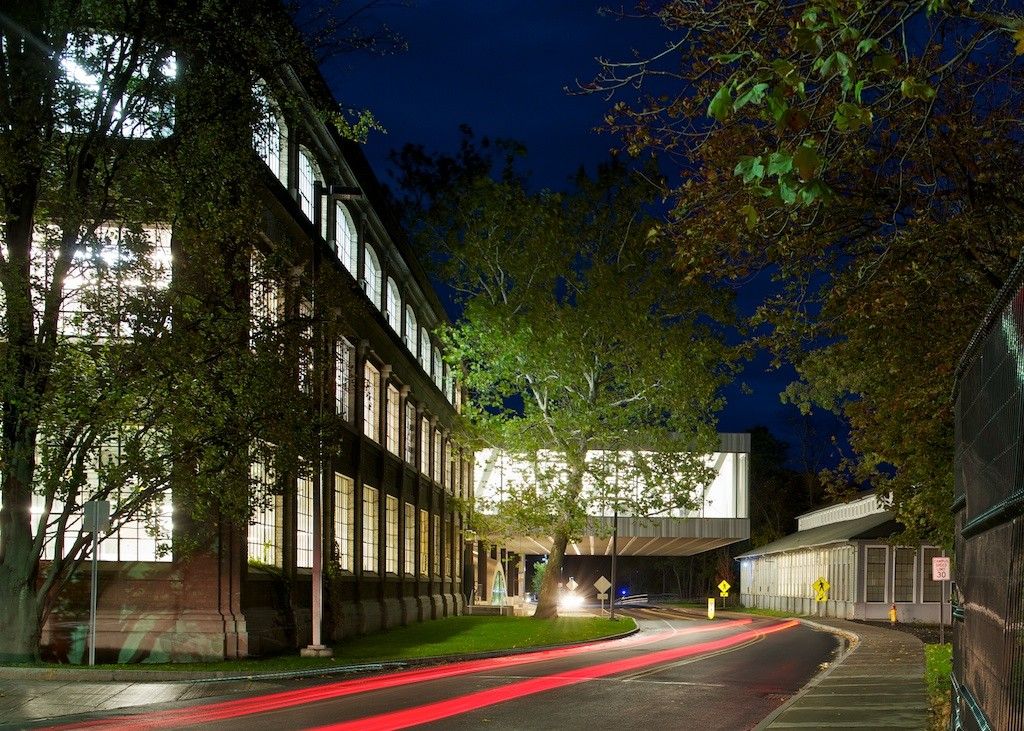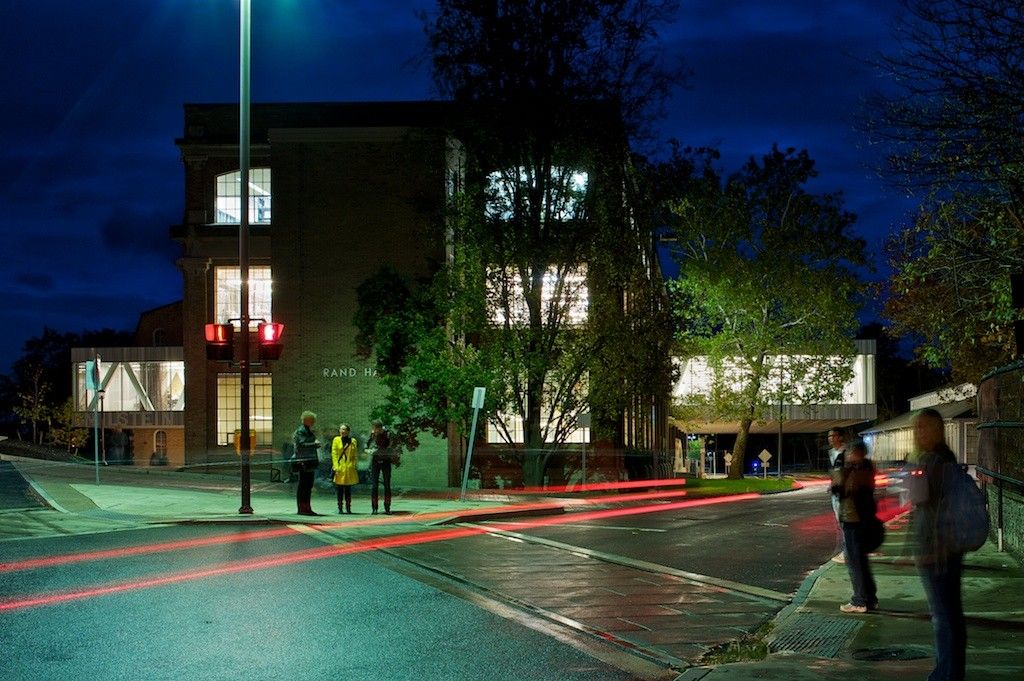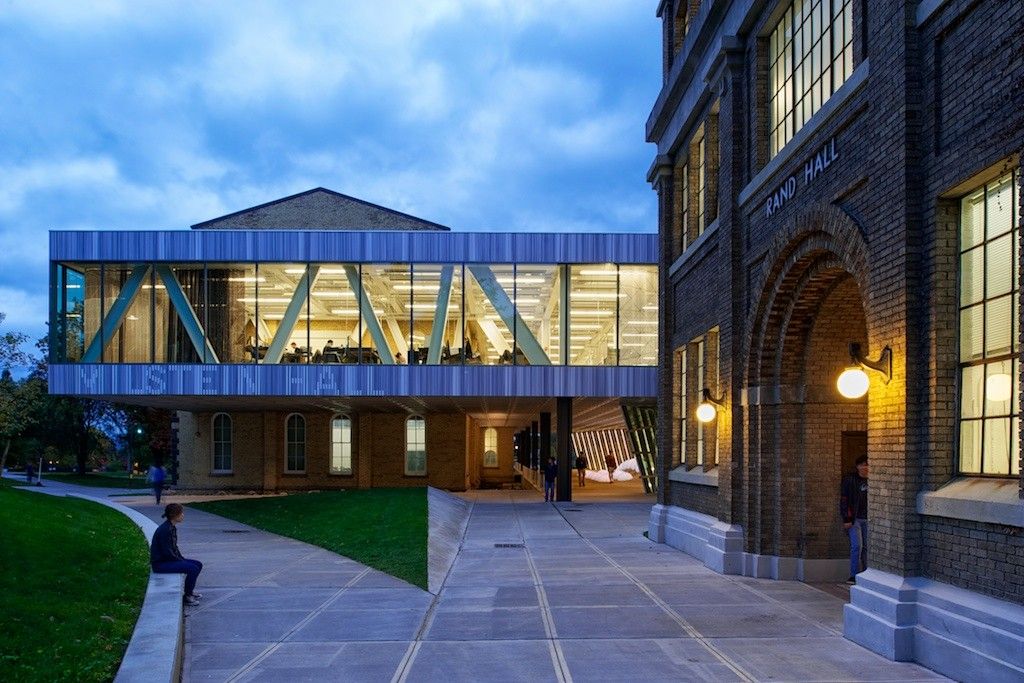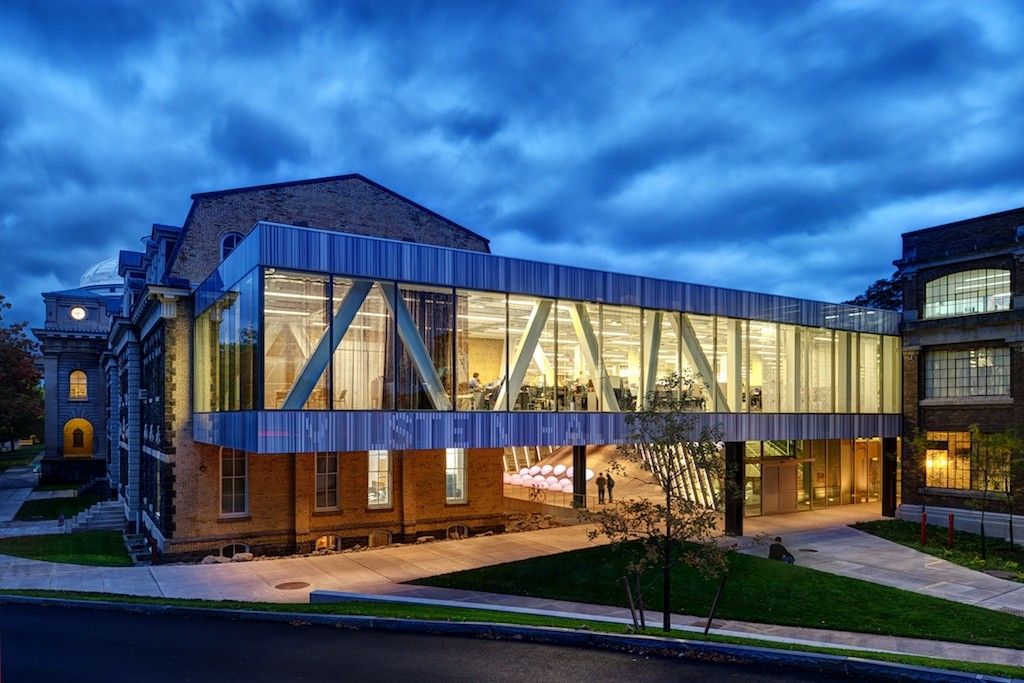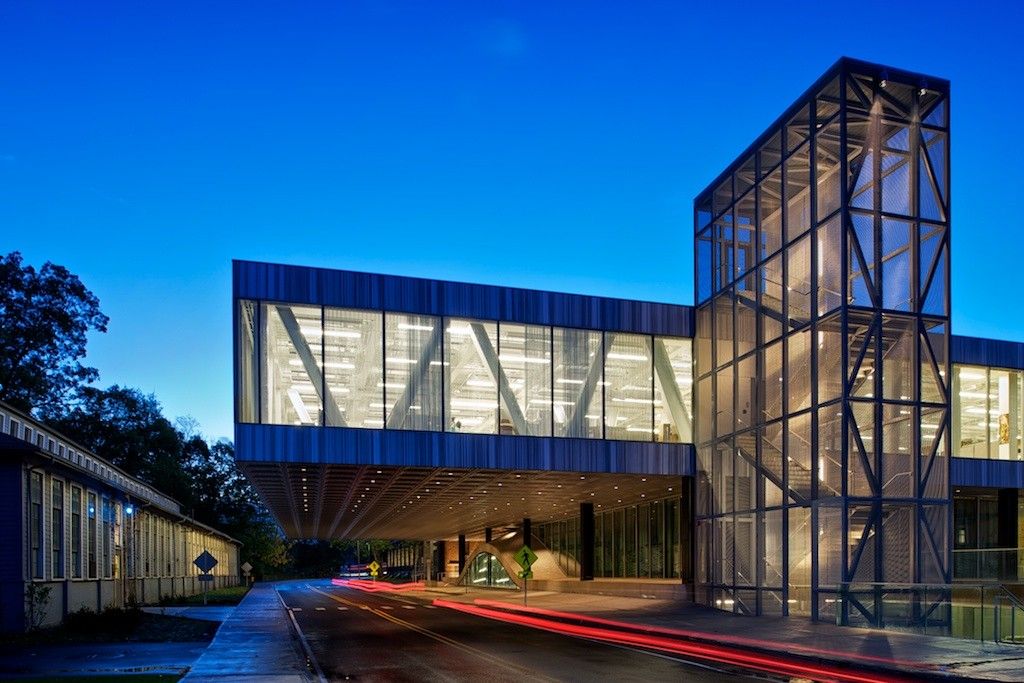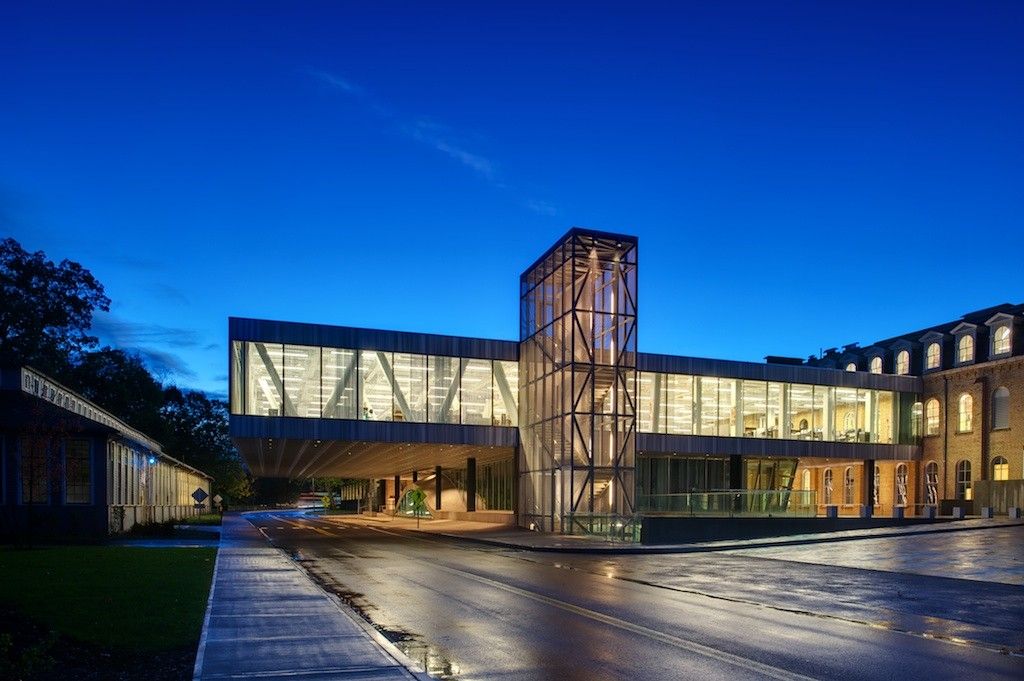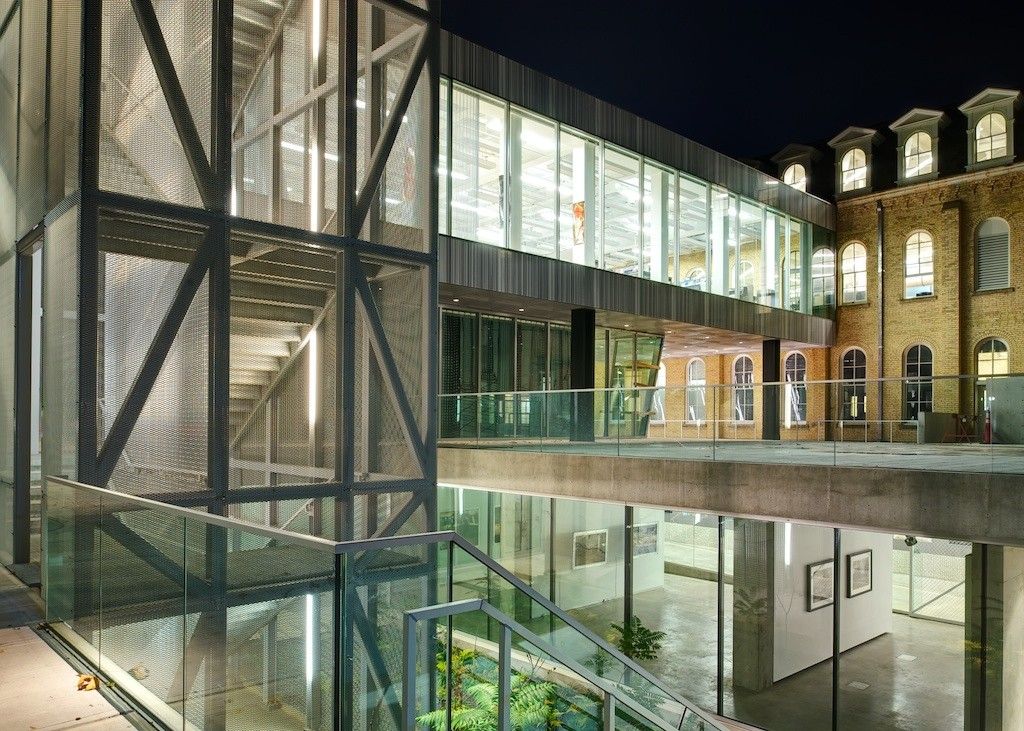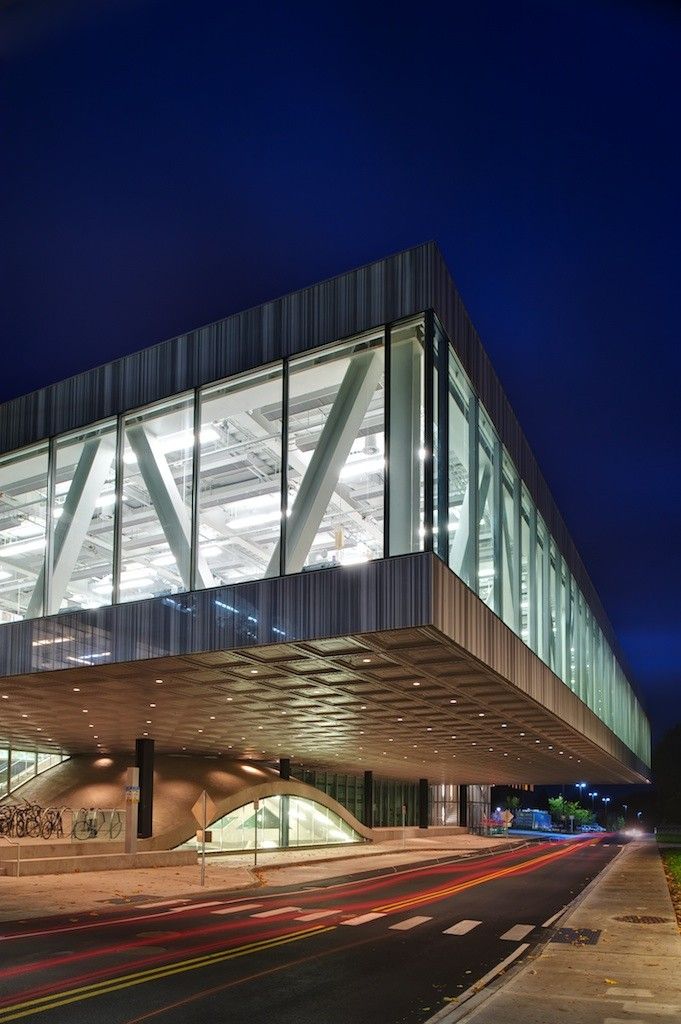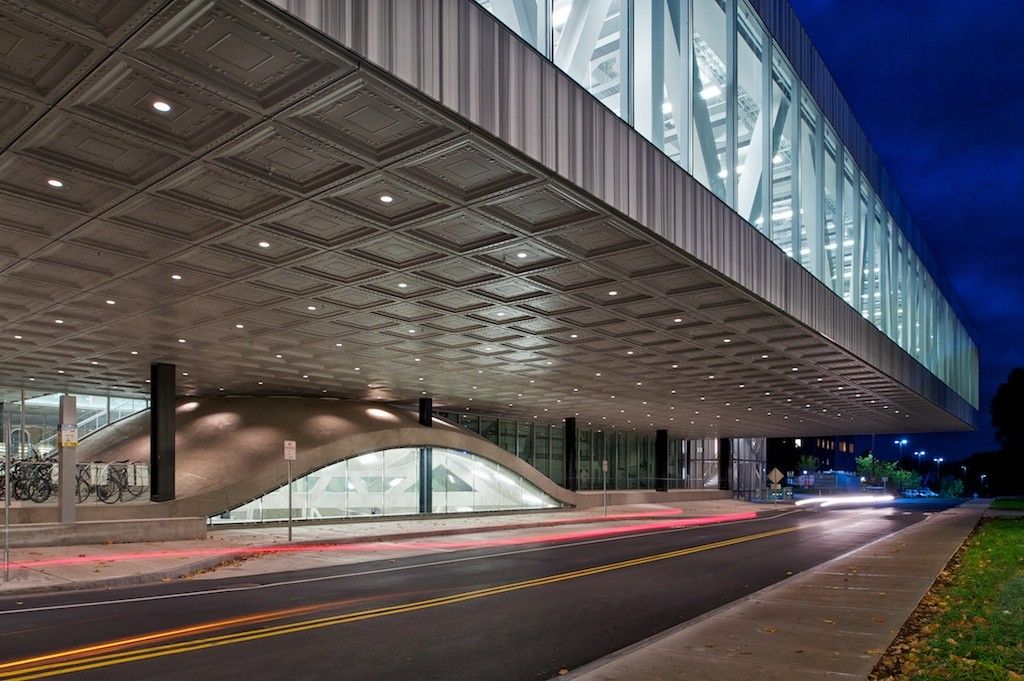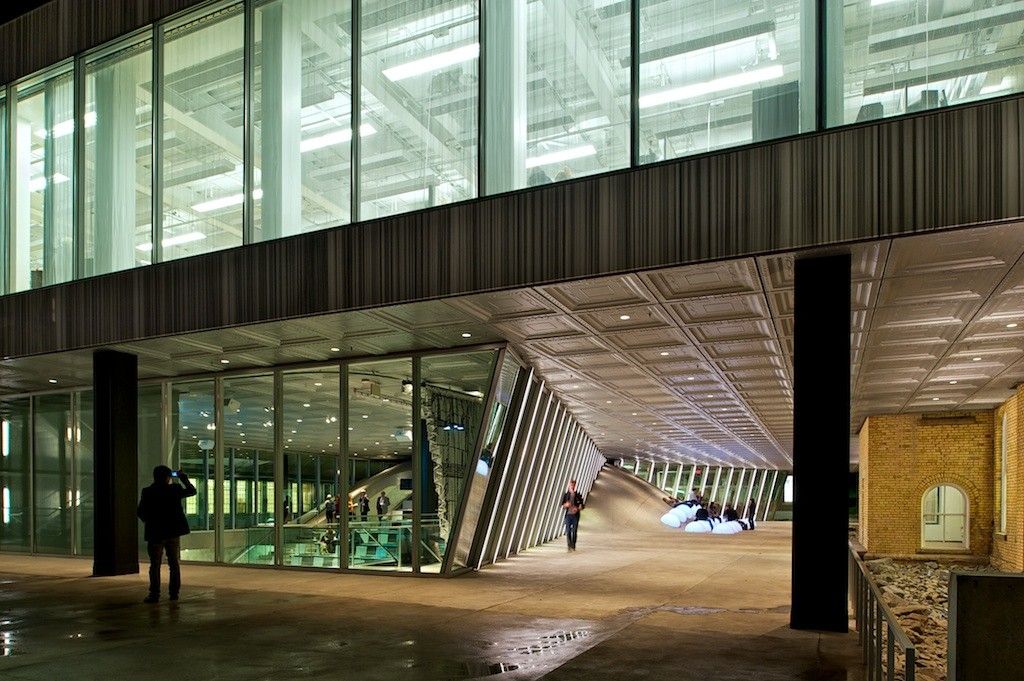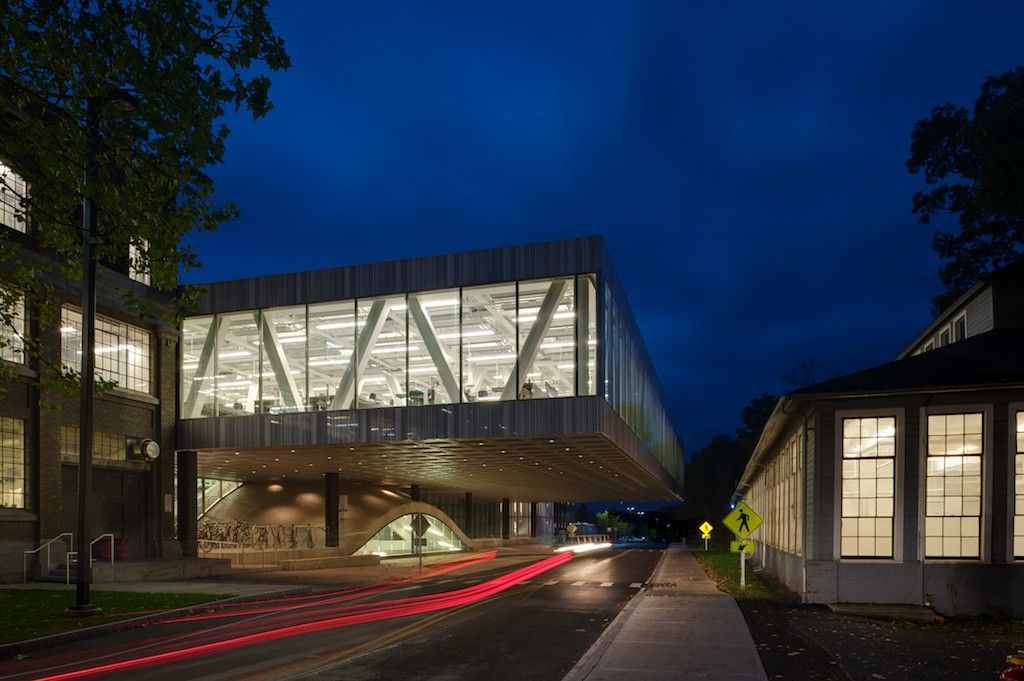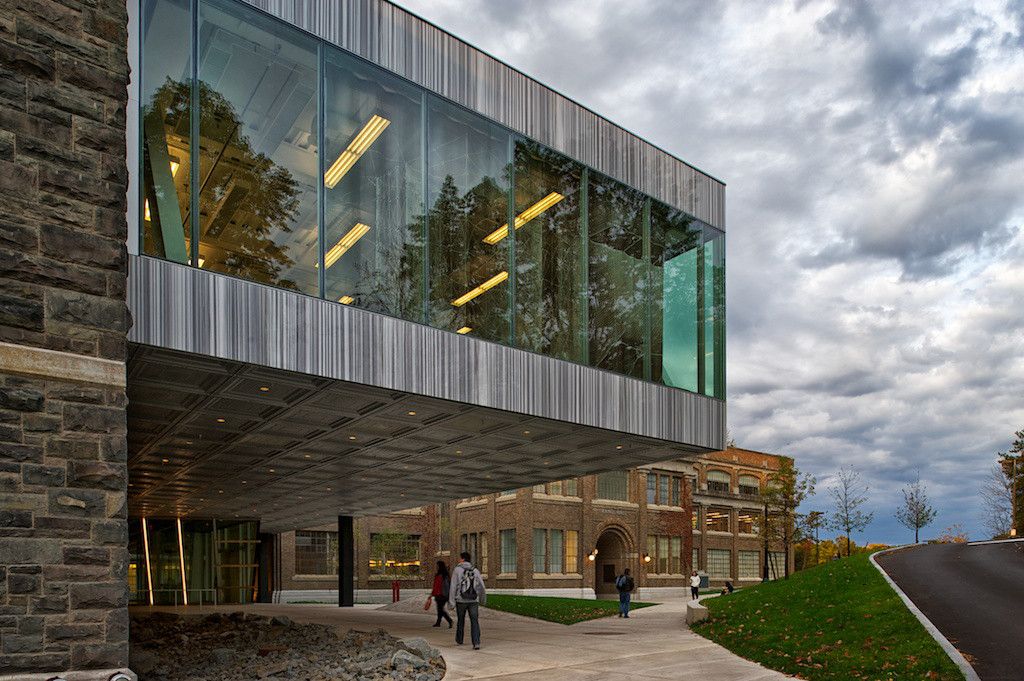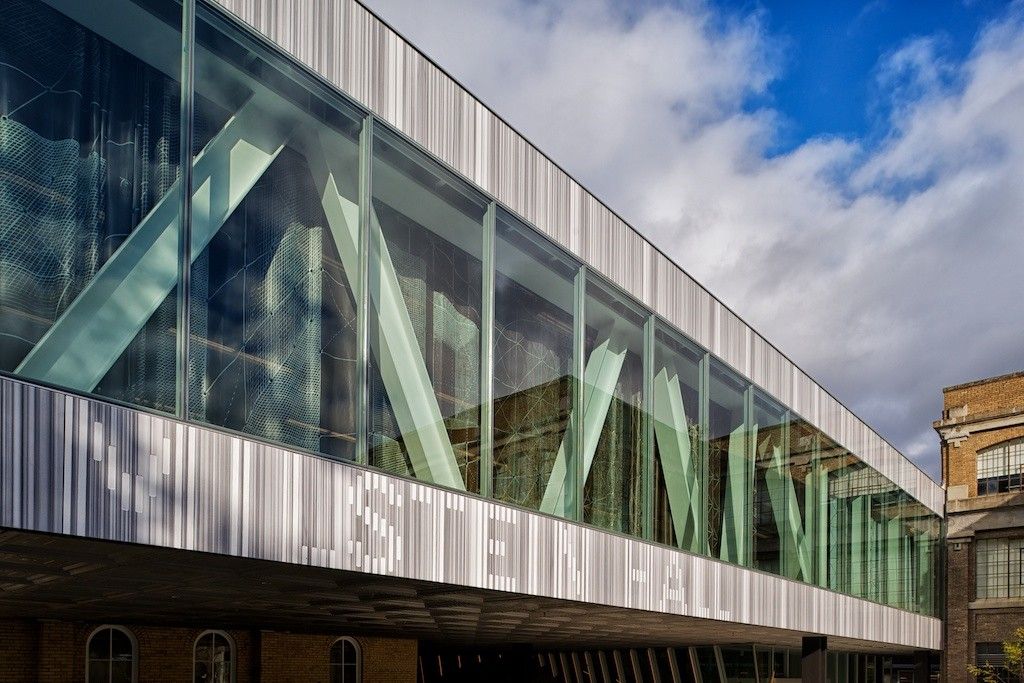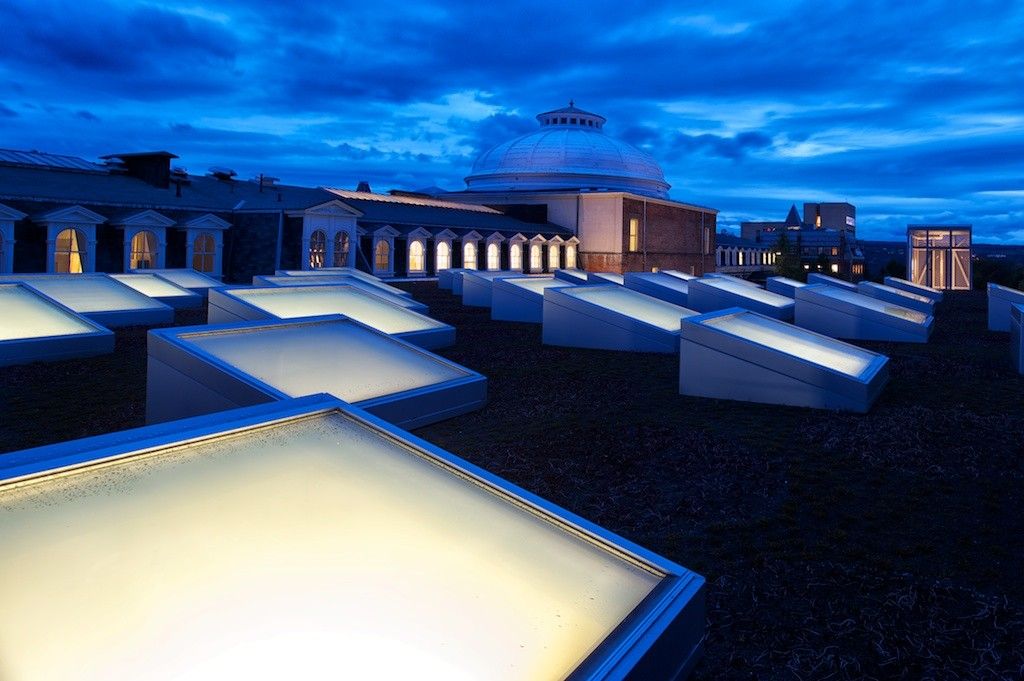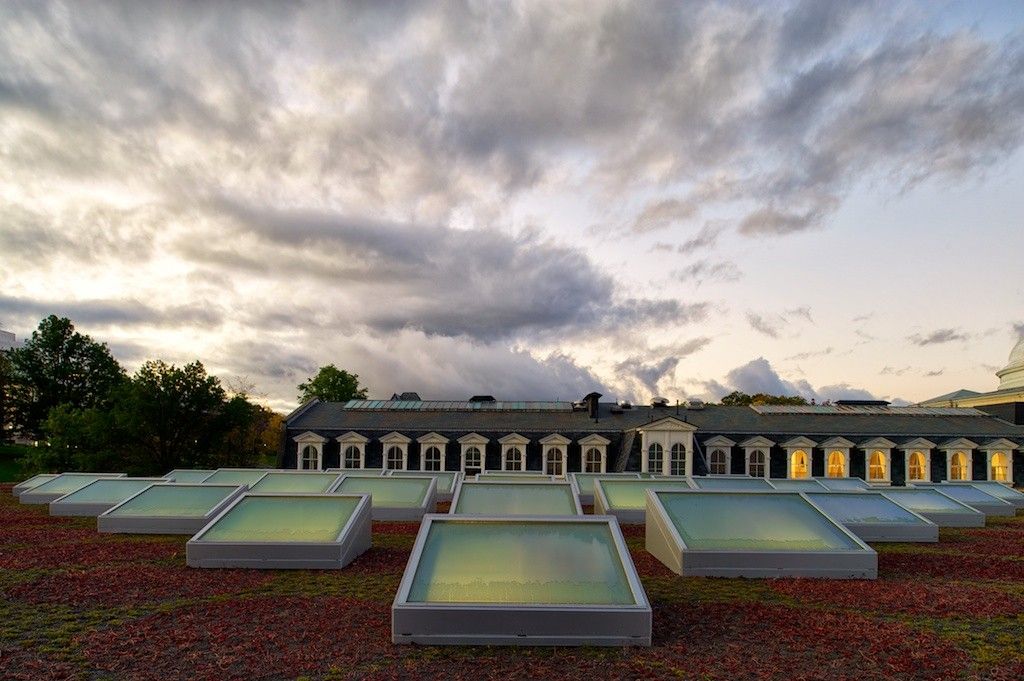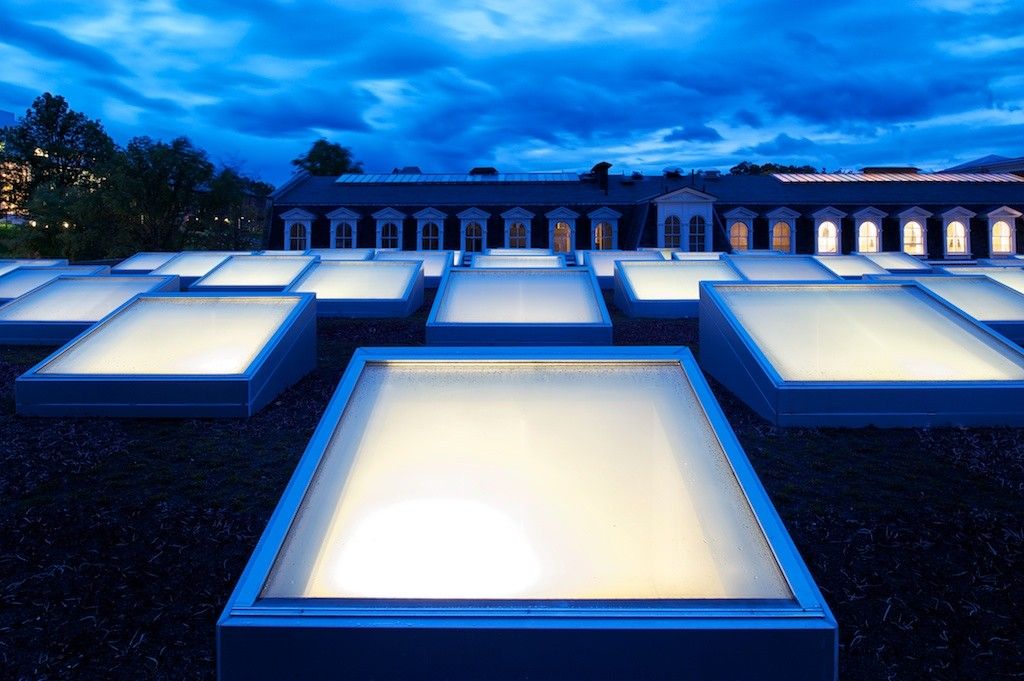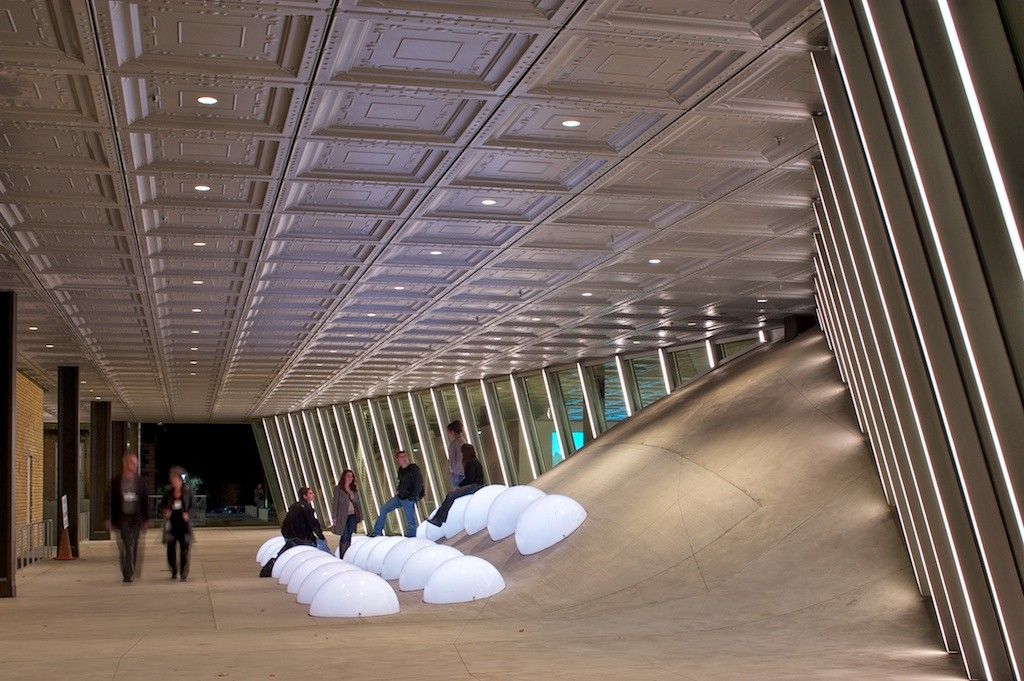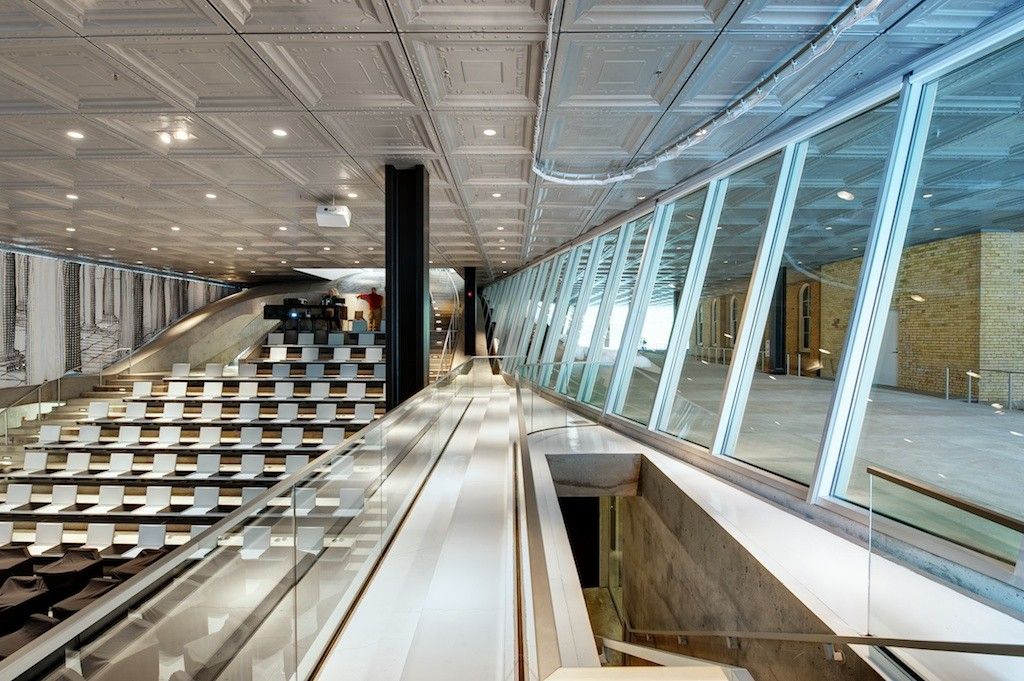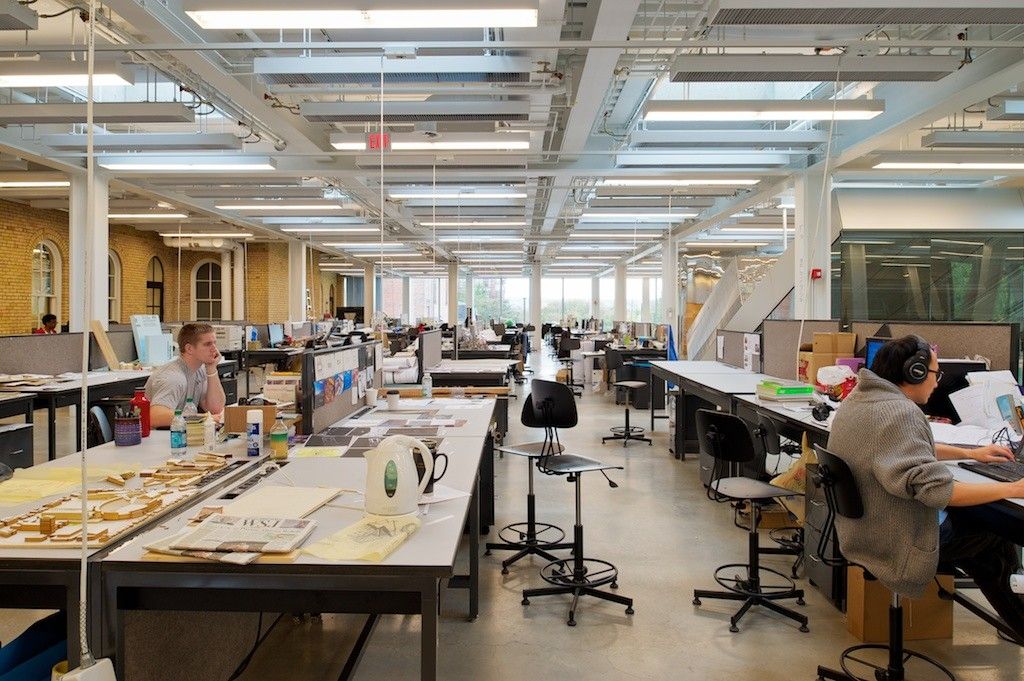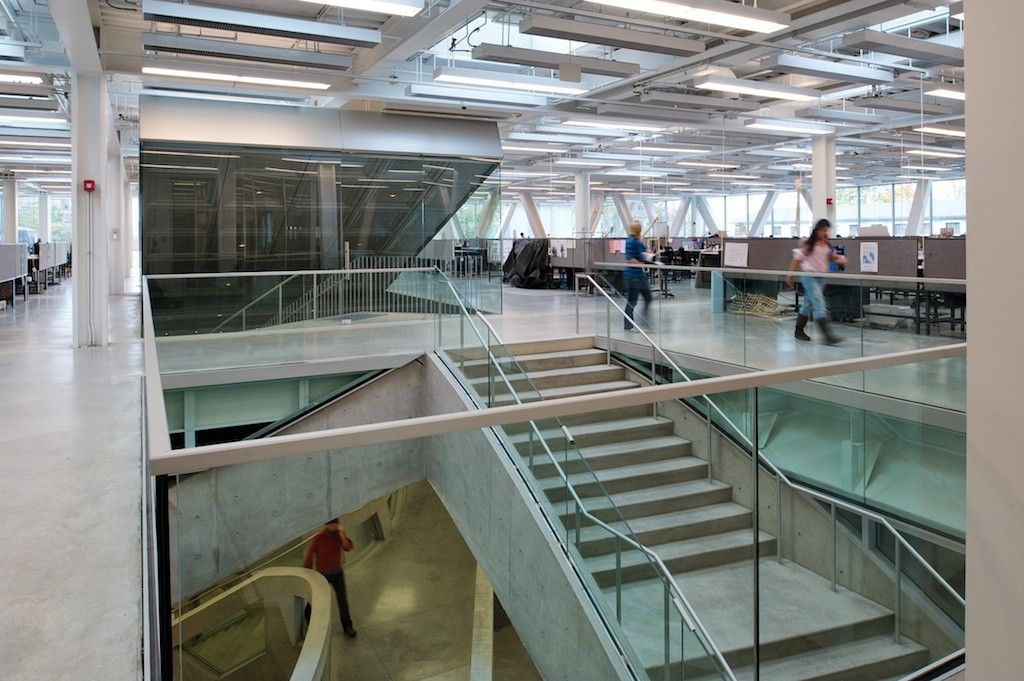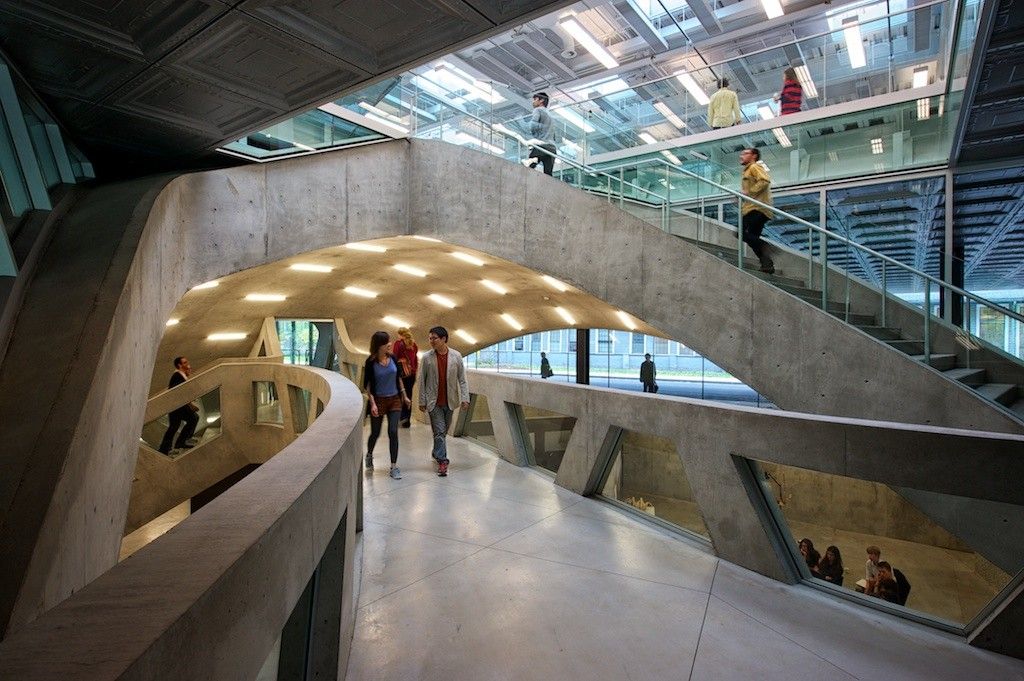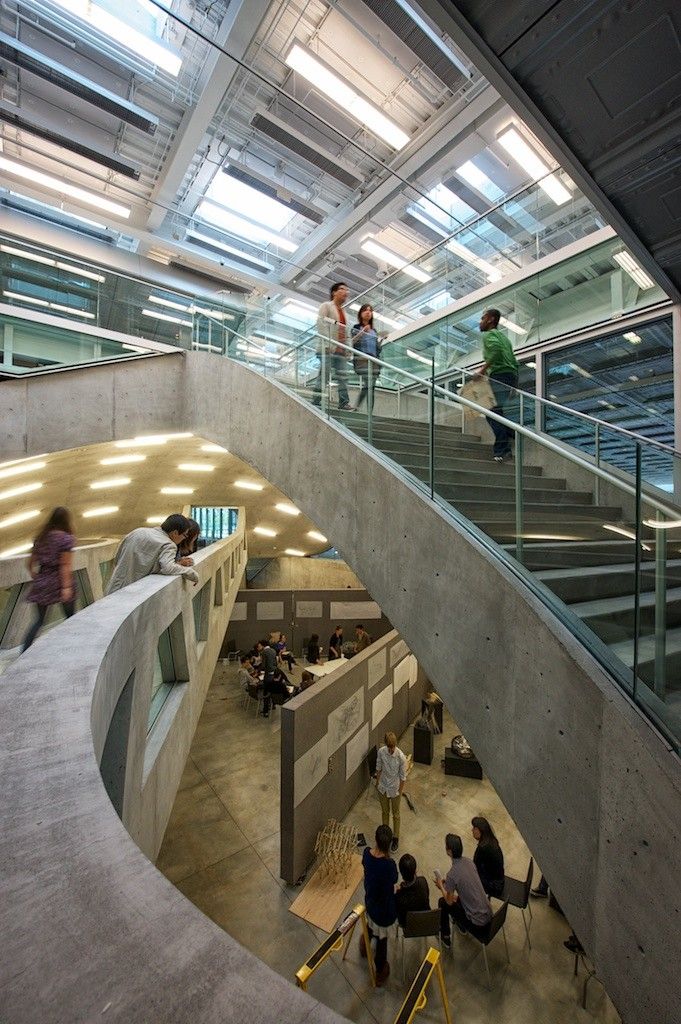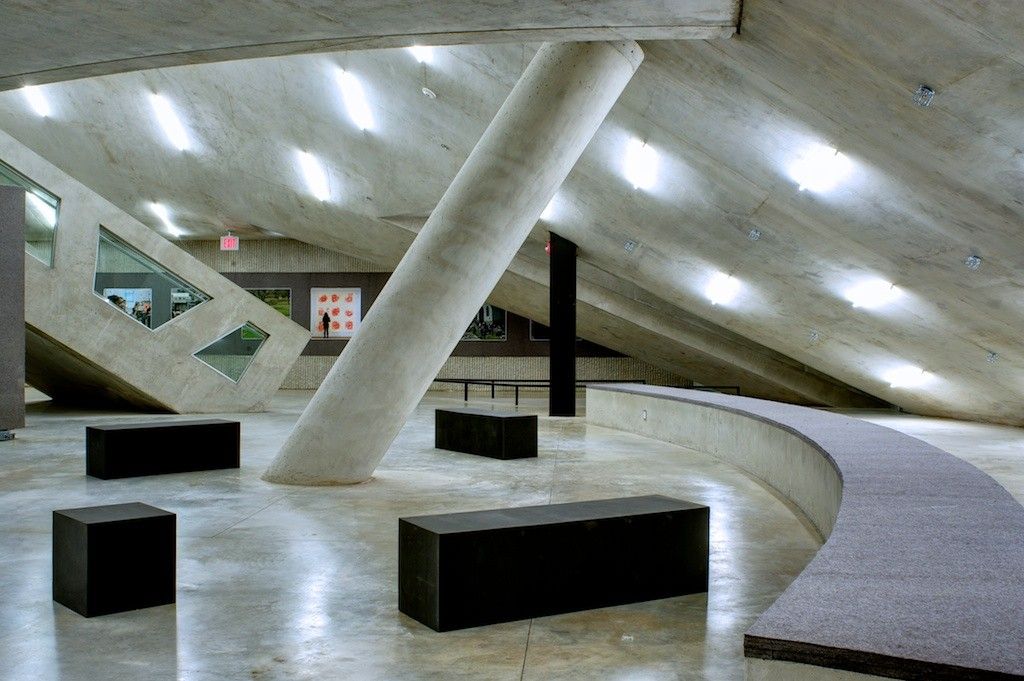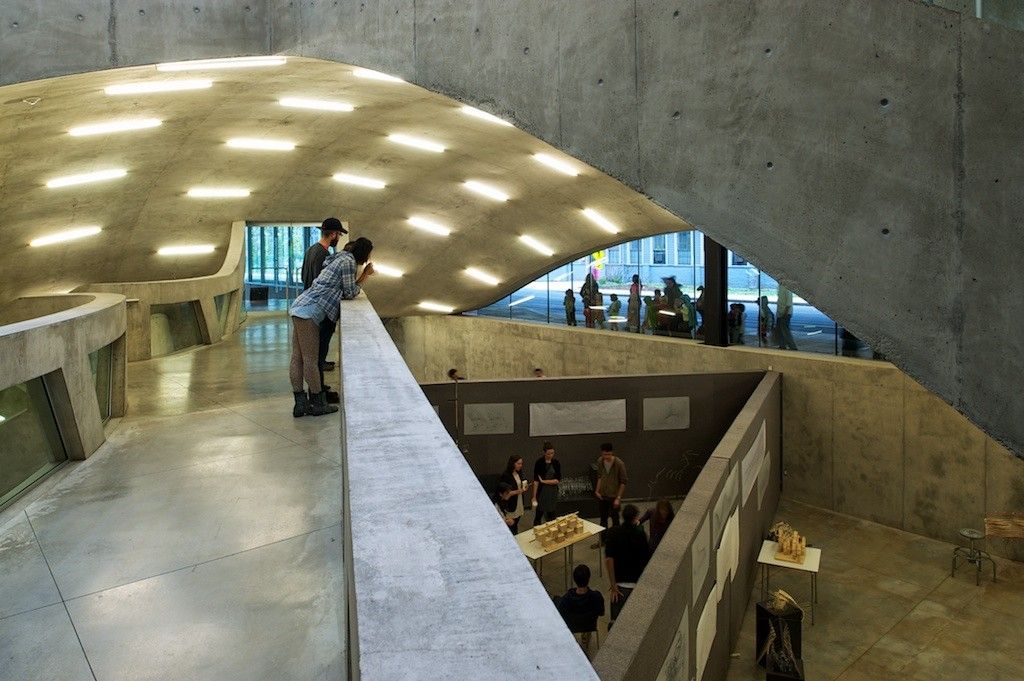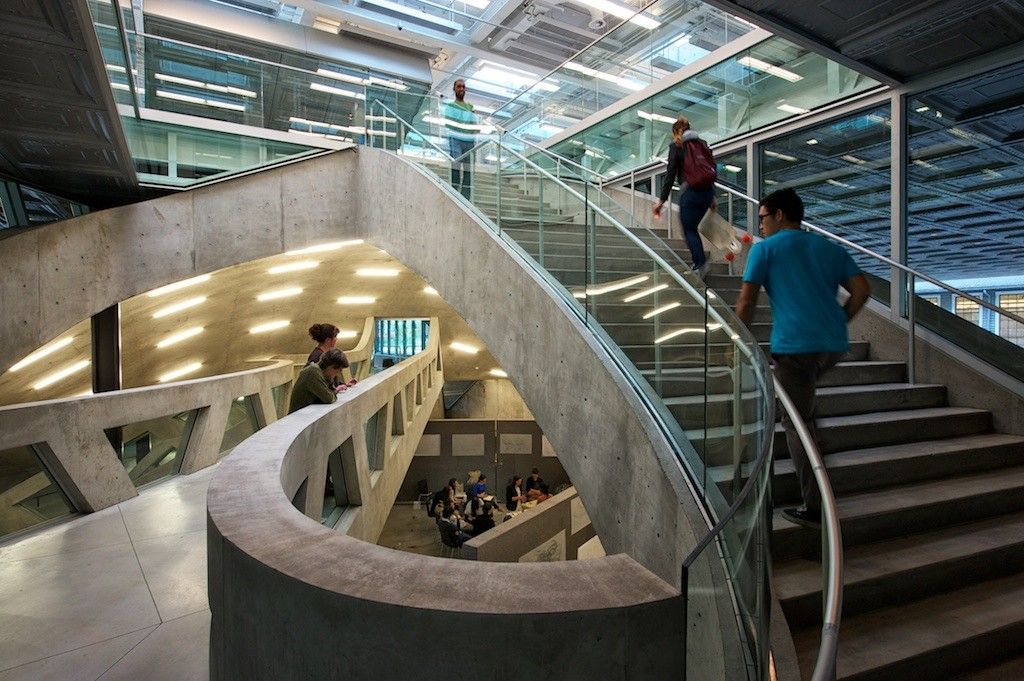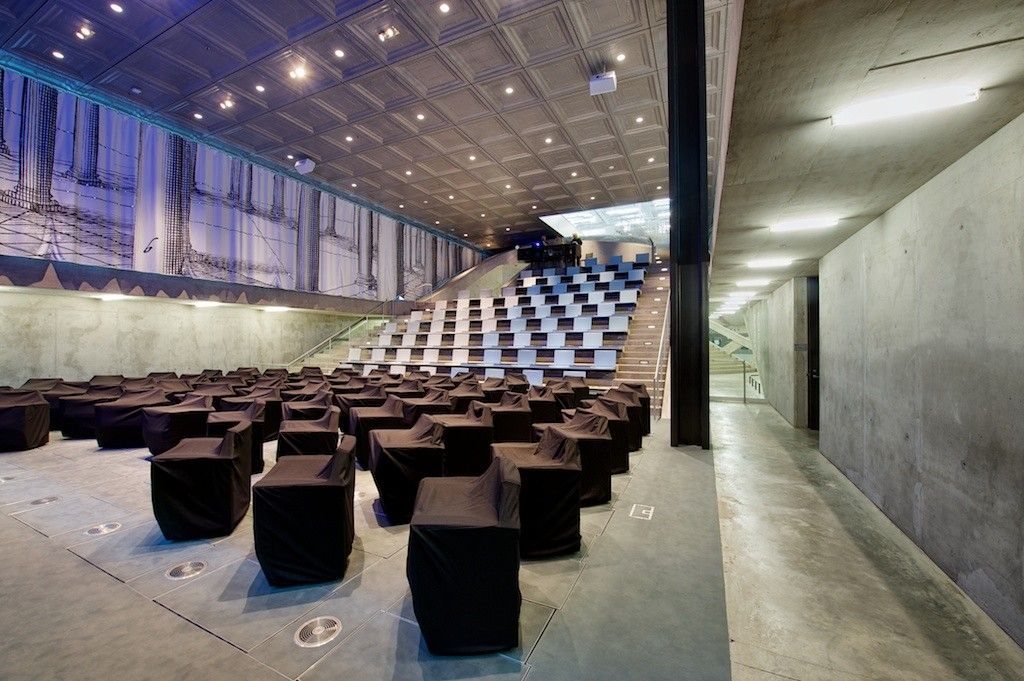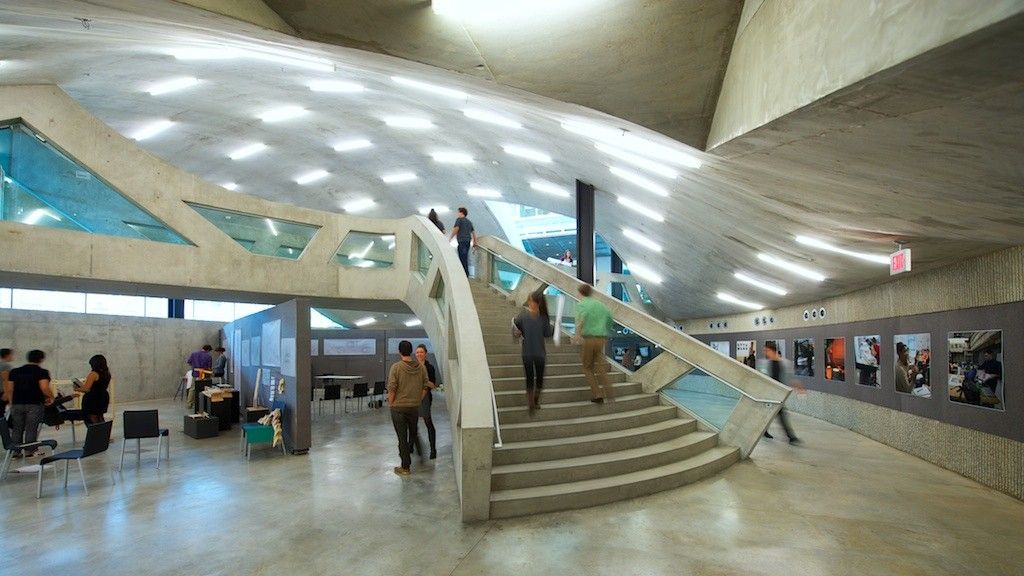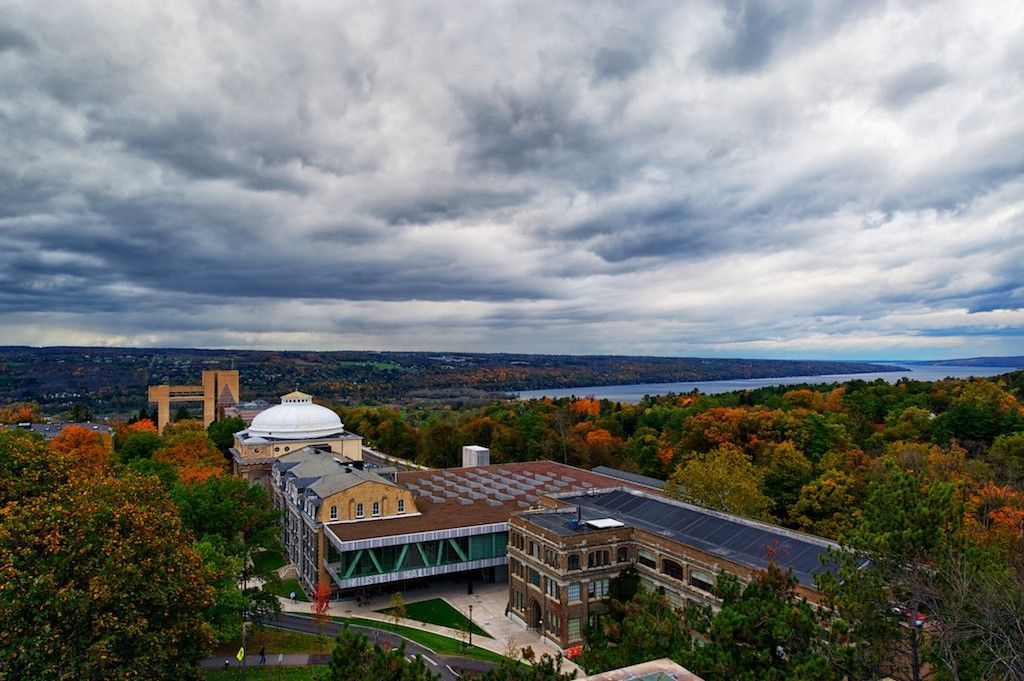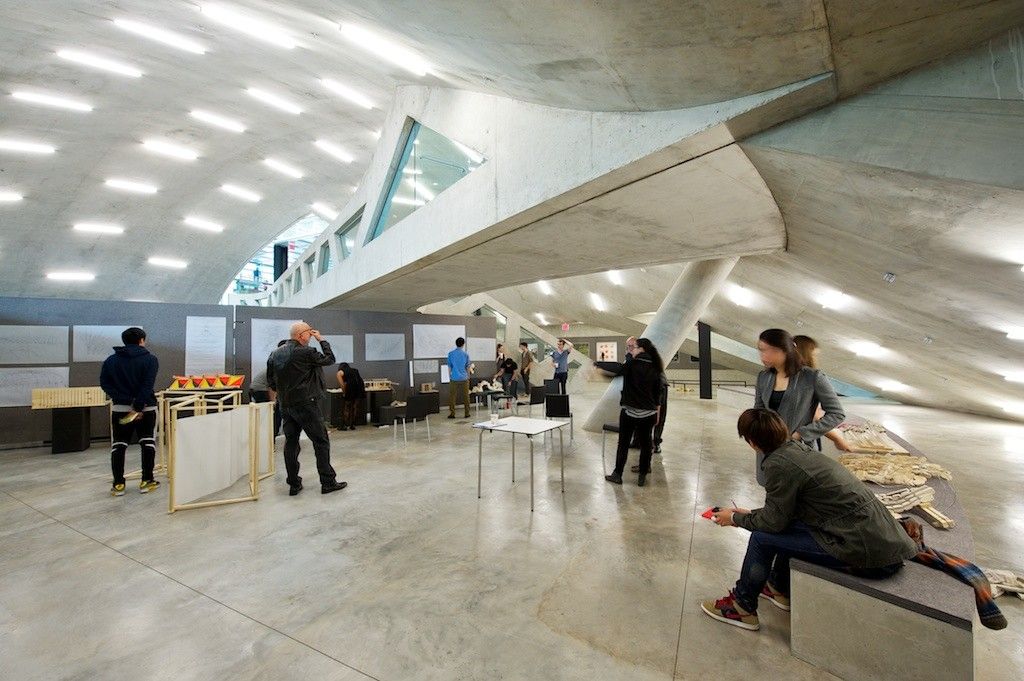Milstein Hall is the first new building in more than 100 years for the renowned College of Architecture, Art and Planning (AAP) at Cornell University. Rather than designing a new freestanding building, Milstein Hall is an addition to the AAP buildings, creating a unified complex with continuous levels of interconnected indoor and outdoor spaces..
The four existing buildings of the AAP – Rand, Sibley, the Foundry and Tjaden Hall – exhibit varying architectural styles but share a single typology: linear, corridor-based buildings that segregate the AAP’s disciplines in closed rooms behind a labyrinth of entrances, security codes and dead ends.
Milstein Hall provides a type of space currently absent from the campus: a wide-open expanse that stimulates the interaction of programs and allows flexibility over time. Within Milstein Hall’s, upper plate areas are defined not by walls but by subtle manipulations of the section that trigger particular uses: a sunken area for the library, raised areas for crit spaces and open spaces for studios – all suffused with light from floor-to-ceiling windows and a grid of skylights. The roof of the upper plate, visible from the third floor of Sibley, Rand and Baker Lab, is an open platform with views of the gorge and the surrounding campus, and is gridded with vegetation that becomes denser in the direction of the gorge.
Milstein Hall is intended as a building with hidden depths: the floor of the upper plate is punctured by the bulging ceiling of the lower plate, opening a route to the lower levels. This bump continues to slope downwards on both sides, dissecting the lower plate into three areas with varying heights and depths: the lobby (on the Rand side of the building), the basement, with computer labs and meeting areas (in the middle) and a 282-seat auditorium that gradually rises to a double-height space (on the Sibley side). Like the upper plate, the auditorium has floor-to-ceiling windows, granting views both into the lecture theatre for passersby and out of it for students. Outside the auditorium, the sunken garden, an exhibition space and a plaza extend to the central, domed portion of Sibley Hall, reinforcing its importance and creating a coherent entry sequence from the north into AAP. Milstein Hall’s sheltering cantilevers, both to the north and the south east, similarly define new areas of public space and encourage new ways to navigate the interlinked AAP.
Project Information :
Architect : OMA
Location : Ithaca, USA
Project Year : 2006 – 2011
Total Area : 4,370 square meters
Structural Engineer : Robert Silman Associates
Civil Engineer, Site Utilities : GIE Niagara Engineering
Photographs: Matthew Carbone


